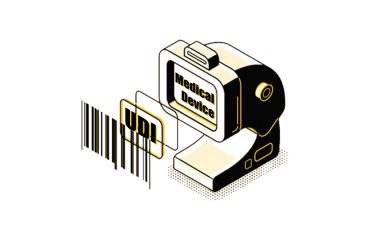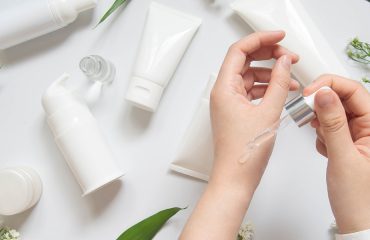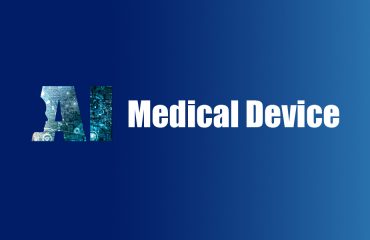China cosmetics inspection measures were released by the National Medical Product Administration (NMPA) on April 26, 2024. These measures are the first systematic regulation of cosmetics inspection in China and will come effect on November 1, 2024. These measures are based on the following existing regulations and seek to improve the safety of cosmetics:
- Cosmetics Supervision and Administration Regulations (CSAR)
- Administrative Measures for the Filing and Registration of Cosmetics
- Measures for the Supervision and Administration of Production and Distribution of Cosmetics
Below we provide a summary of the provisions of Cosmetics Inspections in China.
General Provisions
- Purpose and Scope: These measures standardize the inspection of cosmetics manufacturers and traders in China, ensuring compliance with national standards and technical specifications.
- Regulatory Responsibility: The NMPA oversees nationwide inspections, while local drug regulatory departments manage regional inspections.
- Obligations of Inspected Entities: Manufacturers and traders must cooperate with inspections and cannot refuse, evade, or obstruct them.
- Inspection Types: Inspections include licensing, routine, causal, and other inspections.
- On-site inspection is the main way to inspect cosmetics and can be carried out with or without prior notice.
- Off-site inspections include inspections of written materials submitted by inspected objects, and remote inspections using digital technology.
- Routine inspections of cosmetics registrants, record-filing persons and entrusted production enterprises will focus on the key items in the Key Points and Judgment Principles of Good Manufacturing Practice for Cosmetics.
Inspection Procedures and Requirements
- Inspector Qualifications: Inspectors must have appropriate legal and professional knowledge. Inspections typically involve at least two inspectors.
- Documentation and Reporting: Inspection records and audit reports must detail inspection processes, findings, and recommendations, and be signed by inspectors and responsible parties.
- Emergency Measures: Immediate reporting and control measures are required if products pose health risks.
Routine Inspections
- Risk-Based Approach: Inspections will consider factors such as cosmetics registration and filing, sampling inspection, adverse reaction monitoring, risk monitoring, complaint and report, case investigation and handling, public opinion monitoring, etc.
- Focus Areas: A routine inspection plan will be formulated and will focus on children’s cosmetics, special cosmetics and cosmetics using new raw materials during the monitoring period, as well as cosmetics registrants, filing persons, and entrusted production enterprises.
Cause-based Inspections
- Triggers for Cause-Based Inspections: These Inspections are initiated due to quality risks identified in various monitoring activities or complaints, e.g.
- It is found that the product may have quality and safety risks in the course of registration and filing, sampling inspection, adverse reaction monitoring, or risk monitoring;
- Complaints, reports or clues from other sources indicate that the product may have quality and safety risks;
- Suspected of violating laws and regulations on cosmetics supervision and administration, or the product is suspected of not meeting the technical requirements specified in mandatory national standards, technical specifications, and cosmetics registration or filing materials;
- Public opinion monitoring shows that the product may have quality and safety risks;
- Other situations where it is necessary to carry out inspections for cause.
- Inspection Focus: Emphasis on verifying compliance with regulations.
- Confidentiality: Inspection details are not disclosed to the inspected entities in advance to maintain integrity.
Inspection Results
- Follow-up Actions: Regulatory actions can include orders for rectification, suspension of operations, recalls, and investigations.
- Rectification Reports: Inspected entities must submit rectification reports and may request the lifting of control measures once issues are resolved.
- Non-cooperation Penalties: Entities refusing or obstructing inspections face severe penalties and public disclosure of their non-compliance.
Supplementary Provisions
- Definitions: Clarifies terms such as cosmetics producers and traders which refers to:
- cosmetics registrants & filing persons
- entrusted production enterprises
- domestic responsible persons
- business operators
- operators of centralized cosmetics trading markets
- trade fair organizers
- e-commerce platform operators
- as well as beauty salons and hotels that use cosmetics in their business operations or provide cosmetics to consumers.
- Applicability: Inspections also include new cosmetic raw materials, toothpaste, and extended inspections on suppliers.
- Implementation: Local regulatory departments may formulate detailed rules based on these measures.
- Effective Date: These measures take effect on November 1, 2024.
The cosmetic inspection measures stress the importance of public transparency in regulatory practices. It mandates the publication of information related to inspections on government websites, including details about the entities inspected, the legal basis for the inspections, and the outcomes. This ensures public access to information and enhances the accountability of both the regulatory authorities and the businesses involved. This approach not only fosters a clearer understanding of regulatory standards within the cosmetics industry but also promotes a culture of compliance and public trust in regulatory processes.
These measures are designed to ensure the safety and compliance of cosmetics in China through a structured and comprehensive inspection regime. Regulatory affairs managers must ensure their organizations are prepared to comply with these detailed inspection protocols and cooperate fully with regulatory authorities.
Further information:
Read the original announcement on China cosmetics inspection administrative measures.
Read our previous blog post on China cosmetics inspection draft measures to know more detailed information of these measure.
Discover our services for cosmetics and raw material manufacturers.
GET IN TOUCH

 Deutsch
Deutsch  Italiano
Italiano  Français
Français  日本語
日本語  한국어
한국어 



